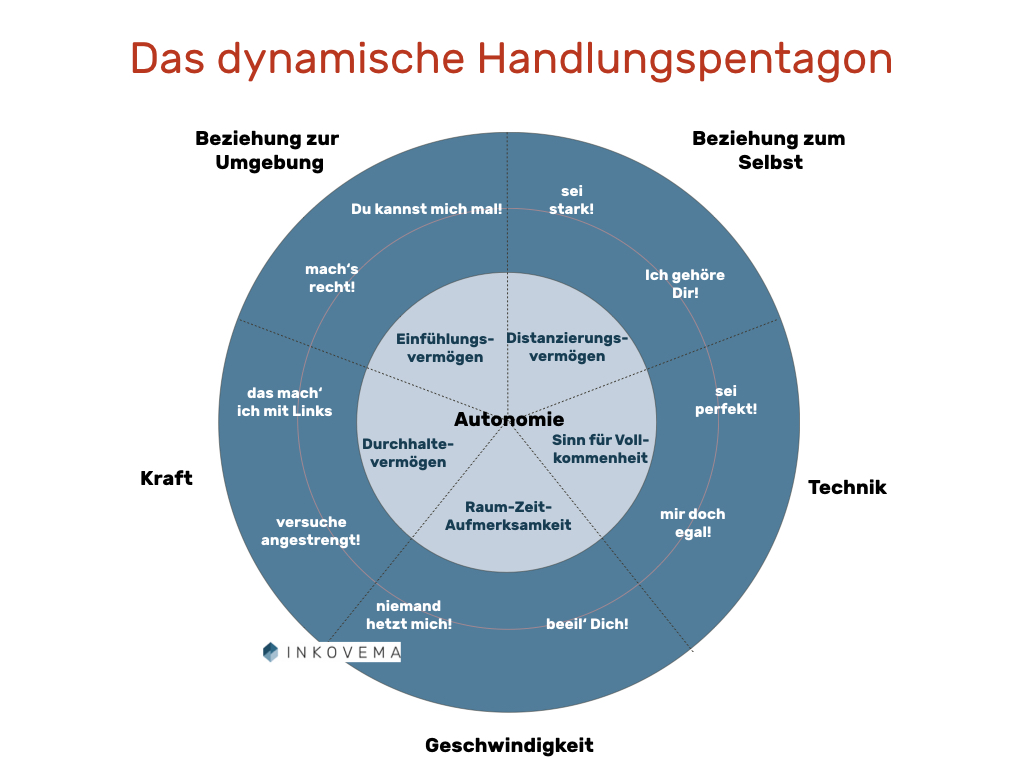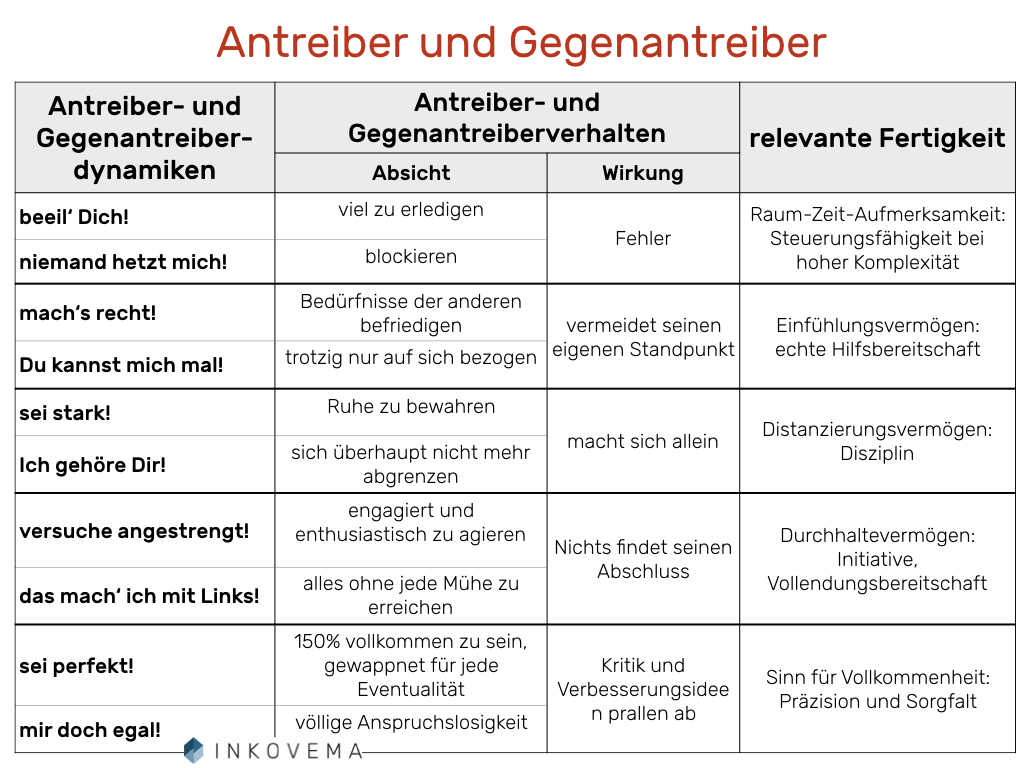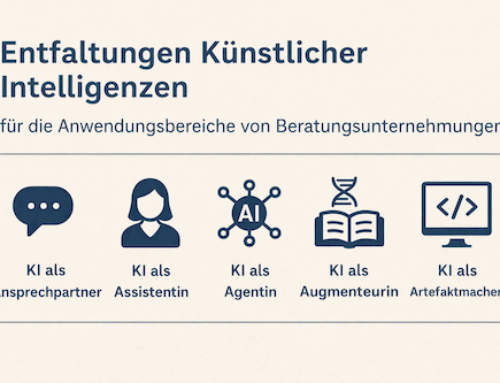The action pentagon or driver and counter-driver united
The second part on the transaction-analytical concept of drivers delves deeper into the problem of being driven in the life-managing task of solving problems; the small everyday…
- How do I dress?
- What am I eating today?
- Can I still get the rubbish down?
- Would I like to meet XY today?
as well as the big questions of life…
- What am I interested in?
- What do I work for?
- Who am I sleeping with?
- Do I want to raise a child?
The dynamic action pentagon is a concept that is derived from the German transaction analysts J. Schneider was formulated and Kahler's driver concept based.
It represents the Structures and dynamics of being driven into a more comprehensive concept and works with the basic idea that the Driver behaviour in its one-sidedness opposite equivalents has.
For every driver behaviour there is also a counter-driver behaviour.
The dynamic plot pentagon describes
- using the five polarities (drivers vs. counter-drivers)
- five dimensions, for successful problem solving are required.
Successful problem solving in this context is characterised by the fact that it is the result of an autonomous decision in which the person has used all constructive ego states. In other words, found their personal measure.
If you recognise attempts to solve problems in driver behaviour that were developed and tested in childhood and have - more or less - proven themselves since then, it is only a small step to filter out the constructive parts. In addition, the opposite exaggerations (counter-drivers) also emerge from this perspective.
The five dimensions of productive problem solving
In principle, problem solvers develop their skills and abilities in five dimensions. These are based on perception, feeling and awareness and are summarised in the following diagram.
| Dimension | Skills/abilities | Definition of |
|---|---|---|
| Environmental reference | Empathy/empathy | ...to consider and associate the environment appropriately. |
| Self-reference | Distancing ability | ...to consider and dissociate appropriately. |
| Power | Stamina | ...to make an appropriate effort. |
| speed | Space-time awareness | ...to dose your own movements appropriately. |
| Technology | Sense of perfection | ...to develop the way of good realisation appropriately. |
Driver and counter-driver behaviour
In this respect, driver and counter-driver behaviour are inappropriate overstatement or understatement of these dimensions. The applied skills appear dysfunctional and are insufficiently balanced. One's own actions are perceived as inadequate, ineffective and repulsive. Even if success is achieved, it comes at a high price.
Such driver and counter-driver behaviours have their origins in our own biographical learning processes. Above all, they represent something What has become that once helped, but currently represents inadequate attempts at a solution. Your Destructiveness results above all from their stereotypical and compulsive application.
The concept of the action pentagon is a useful and sometimes necessary addition to the driver concept. Only through the action pentagon does it become clear which constructive cores occur in the respective driver concepts.






Leave A Comment